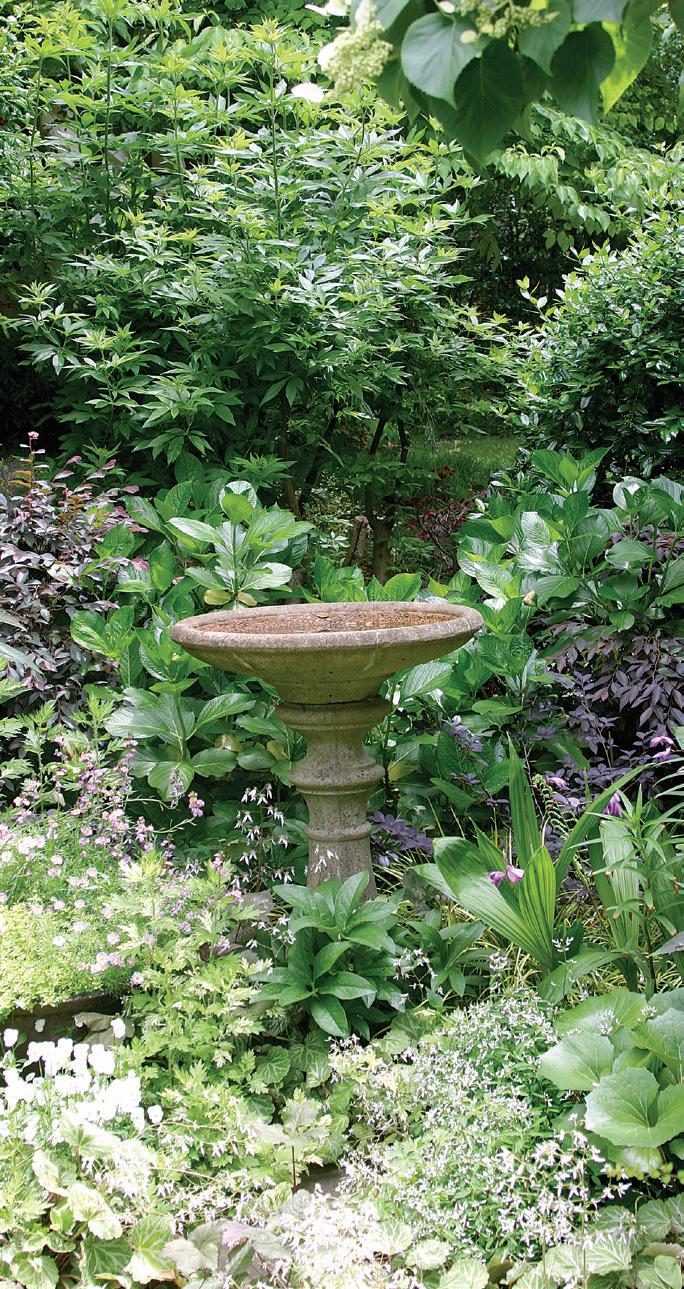
3 minute read
The Magic of Water Gardens and Waterlilies
There’s something magical about water gardens and plants that grow and bloom in water. Whether it’s a birdbath, a fountain or a pond, water has a soothing effect for humans and animals—and plants. Even on the hottest of summer days, water features help to create the illusion of coolness.
The sound of water is also appealing and adds another dimension to the garden. Ponds or streams afford opportunities to grow waterlilies and other water loving plants like Japanese iris, also known as Iris ensata. This iris is happy growing in wet soils or at the edge of a pond.
Thoughts on Design
When you choose a water feature for your garden, the existing site and your personal taste will dictate the design, type and size best suited for your landscape. Where you locate your water feature will depend on how it relates to the rest of the garden. It should be part of your overall design, whether it’s tucked into a corner (to be discovered as visitors journey through the garden) or just outside the patio doors so that you can enjoy it from inside as well as outside.

If you’re limited by space, a small water garden in a decorative container offers the perfect solution. Depending on the size of the container, it can feature a collection of plants or one striking specimen. You can site your potted water garden in a flower border, group it with other containers to create a bold statement or use it as a focal point on your deck or patio.

Waterlilies—Jewels of the Water Garden
Waterlilies are captivating. Their colorful blooms glisten like jewels as they appear to float, almost magically, on top of the water, transforming a pond or water garden into a living work of art. The flowers come in a range of colors including white, pink, red, yellow, blue and purple, and many are fragrant. There are both hardy and tropical selections. Some are large and require lots of space, while others are dwarf and can be easily grown in containers on a patio or balcony.
Hardy types may be planted in early spring and will typically bloom from May through September. They will also survive over the winter (in a dormant state) in a pond, provided the roots don’t freeze.
Hardy waterlilies grow from a horizontal rhizome (Think of a long carrot.) that produces growing points, or eyes, along it. The blooms—cup shaped or starry-like—open in the morning and close in the afternoon. The rounded leaves are usually thick and leathery with smooth edges.
Tropical waterlilies require water temperatures that are 69 to 70 degrees F. At Gibbs Gardens, Jim Gibbs waits until June 1 before he plants the tropical selections to make sure the water is warm enough. Tropicals tend to have larger flowers that are held high above their foliage and blooms that continue until frost.
Only tropical selections produce blue or purple flowers. All the leaves and flowers radiate from a single central crown. The leaves or pads are thin with scalloped or toothy edges and the decorative foliage is often mottled or splotched.
Tips for Growing Waterlilies

• Place containers in a pond so that the water is at least 8 to 12 inches deep to begin. As plants become established, move the container to a deeper spot, 12 to 24 inches deep. For dwarf selections, the water only needs to be 6 to 8 inches deep.
• Use a rich potting soil. Fill a container halfway, then add aquatic fertilizer tabs and push them into the soil. Add the rest of the soil.
• Leave the crown of the rhizome slightly exposed.
• Fertilize on a regular basis, twice a month for tropicals.
• Groom plants by removing yellow leaves and spent blossoms.
• Divide hardy waterlilies every spring to ensure the best blooming.
A word of caution: Left unchecked, these exotic flowers can become invasive. Avoid planting them in ponds or water gardens that flow into creeks, lakes or natural waterways.
•
•
•
•
•
•

Benson Manor is a 76-unit affordable senior housing community designed with stone and sturdy wood-like siding. Each apartment is approximately 540 square feet. Benson Manor is conveniently located close to shopping, churches, medical facilities, and a major bus route.

Residents must be 62 years of age or older. Some units have special features for mobility and sensory impaired persons. Income limitations are determined by the U.S. Department of Housing and Urban Development (HUD). Residents pay 30 percent of their adjusted income for rent. Gross income must not exceed $23,650.00 for one person and $27,000.00 for two persons.










